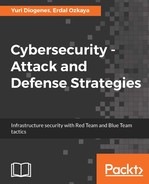There are times when a disaster will affect a system that is still in use. Traditional recovery mechanisms mean that the affected system has to be taken offline, some backup files are installed, and then the system is brought back online. There are some organizations that have systems that cannot enjoy the luxury of being taken offline for recovery to be done. There are other systems that are structurally built in a way that they cannot be brought down for recovery. In both instances, a live recovery has to be done. A live recovery can be done in two ways. The first involves a clean system with the right configurations and uncorrupted backup files being installed on top of the faulty system. The end result is that the faulty system is gotten rid of, together with its files, and a new one takes over.
The second type of live recovery is where data recovery tools are used on a system that is still online. The recovery tools may run an update on all the existing configurations to change them to the right ones. It may also replace faulty files with recent backups. This type of recovery is used when there is some valuable data that is to be recovered in the existing system. It allows for the system to be changed without affecting the underlying files. It also allows recovery to be done without doing a complete system restore. A good example is the recovery of Windows using a Linux live CD. The live CD can do many recovery processes, thereby saving the user from having to install a new version of Windows and thus losing all the existing programs (4). The live CD can, for instance, be used to reset or change a Windows PC password. The Linux tool used to reset or change passwords is called chntpw. An attacker does not need any root privileges to perform this. The user needs to boot the Windows PC from an Ubuntu live CD and install chntpw (4). The live CD will detect the drives on the computer and the user will just have to identify the one containing the Windows installation.
With this information, the user has to input the following commands in the terminal:
cd/media ls cd <hdd or ssd label> cd windows/system32/config
This is the directory that contains the Windows configurations:
sudo chntpw sam
In the preceding command, sam is the config file that contains the Windows registry (4). Once opened in the terminal, there will be a list showing all the user accounts on the PC and a prompt to edit the users. There are two options: clearing the password or resetting the old password.
The command to reset the password can be issued in the terminal as:
sudo chntpw -u <user> SAM
As mentioned in the previously discussed example, when users cannot remember their Windows passwords, they can recover their accounts using the live CD without having to disrupt the Windows installation. There are many other live recovery processes for systems, and all share some similarities. The existing system is never wiped off completely.
